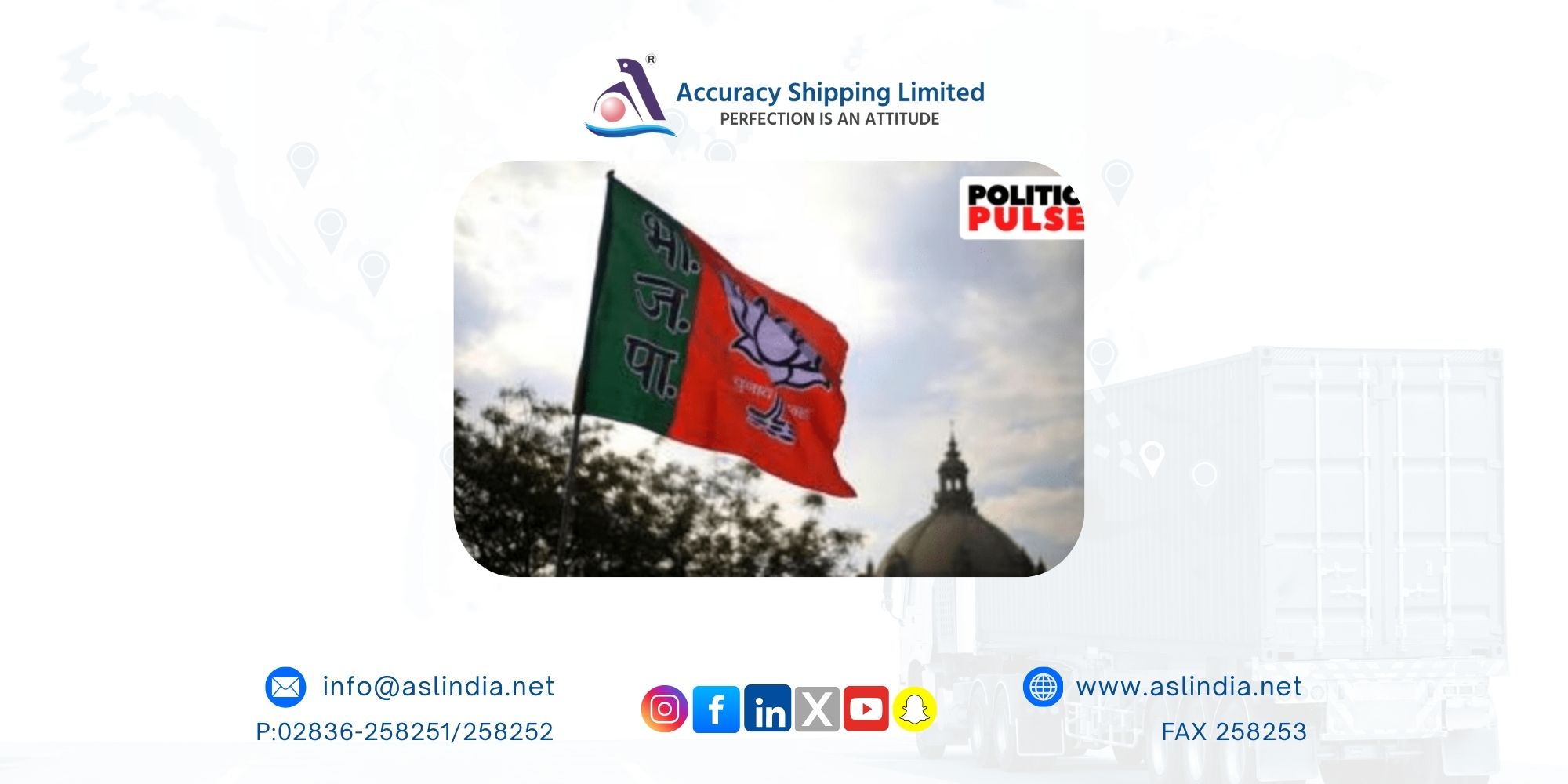Sonowal launches eight projects at New Mangalore Port Authority’s golden jubilee celebration

The Golden Jubilee of the New Mangalore Port Authority (NMPA) this year was not just a celebration of five decades of maritime service but also a milestone moment in India’s port-driven growth story. On this auspicious occasion, Union Minister Sarbananda Sonowal inaugurated eight new projects, underscoring the government’s focus on port modernization, infrastructure expansion, and regional development.
A New Chapter for NMPA in Its 50th Year
The New Mangalore Port, operational since 1974, has come a long way to become one of India’s important gateways on the west coast.
In FY 2024–25, the port recorded its highest-ever cargo throughput, handling 46.01 million metric tonnes, surpassing its earlier record of 45.7 MMT.
To commemorate this milestone, NMPA organized its “Awards Nite 2024–25” on May 14, 2025, honoring stakeholders across the port ecosystem from shipping agents to exporters, stevedores, terminal operators and more.
As part of the jubilee celebrations, the Government of India also approved issuance of a ₹50 commemorative coin to mark the Golden Jubilee of NMPA.
These achievements set the stage for the launch of eight new projects, a symbolic and tangible leap into the next half-century of NMPA’s journey.
The Eight Projects: Symbolism & Substance
While the full list of the eight projects has not been publicly detailed in every press note, they broadly span modernization, capacity expansion, beautification, and ancillary support infrastructure. Some tangible tenders and works already visible include:
The painting of buildings within the wharf area (between the container stack yard and Berth No. 4), as part of preparing the port premises for the Golden Jubilee.
Other internal civil works, beautification, and functional upgrades across port infrastructure in the run-up to the jubilee.
These projects aim to boost operational aesthetics, logistics efficiency, internal connectivity, stakeholder convenience, and the overall image of NMPA as a modern port.
Sonowal’s Vision & Address
Union Minister Sarbananda Sonowal, in his capacity as Minister for Ports, Shipping and Waterways, presided over the inauguration ceremony. His address emphasized several key themes:
The Golden Jubilee is not just a commemoration of the past but a launchpad for the future.
The eight new projects reinforce the government’s commitment to elevating India’s port infrastructure to global standards.
Ports like NMPA are cornerstones of India’s maritime growth enabling trade, employment, regional upliftment, and integration with global supply chains.
He also lauded the collaborative spirit between central, state, port management and private stakeholders that made this event possible.
How This Links to the Broader Port & Maritime Agenda
The NMPA jubilee and project launches do not operate in isolation; they dovetail into the broader ambitions of India’s maritime infrastructure strategy. A particularly pertinent aspect is the development of Vadhvan Port by Jawaharlal Nehru Port Authority (JNPA), which shares many themes of scale, modernization, and regulatory complexity.
The Vadhvan Port Project A Brief Recap
The Vadhvan Port, to be located in Taluka Dahanu, Palghar district, Maharashtra, is one of the country’s most ambitious port infrastructure projects.
It is being developed by Vadhvan Port Project Ltd. (VPPL), in which JNPA holds 74% and the Maharashtra Maritime Board holds 26%.
The natural seabed depth near the proposed location is about 20 meters, making it possible to handle ultra large container vessels a strategic advantage India currently lacks on its western coast.
In February 2025, JNPA entered into a Memorandum of Understanding (MoU) with NMDC Group PJSC to collaborate on dredging, reclamation, and shore protection components. Under this MoU, the foreign partner is expected to invest ~₹21,000 crore in the offshore works.
The port is estimated to cost in the ballpark of ₹76,200 crore and is projected to be completed by the end of the decade. It will be capable of handling tens of millions of TEUs and become a game-changer for India’s logistics map.
Legal & Regulatory Hurdles
The Vadhvan project had faced legal challenges from local associations seeking interim relief to stop construction.
However, on 28 February 2025, the Supreme Court dismissed the petitioners’ prayer for interim relief after taking on record the development schedule submitted by JNPA. The Court clarified that acquisition and related legal steps remain subject to further orders in the pending proceedings.
This ruling effectively means that no stay is in place on the development work of Vadhvan Port, allowing JNPA to proceed with execution as per the approved schedule.
Unmesh Sharad Wagh, IRS, Chairperson of JNPA and CMD of VPPL, commented that the order reinforces faith in India’s maritime ambitions and due process. He emphasized that Vadhvan is more than infrastructure it is a symbol of progress, which must align with local wellbeing and sustainable development. maritimegateway.com
Why This Is Relevant
The success and expansion of NMPA contribute to India’s west coast port ecosystem. Each major port modernization builds momentum for others including Vadhvan.
The challenges, regulatory balancing, legal clearances, stakeholder negotiations, and financing requirements that come with mega port projects like Vadhvan resonate with what NMPA is embracing as it steps into its next 50 years.
The narrative of port-led regional transformation, inclusive development, and infrastructure modernization flows across from NMPA to Vadhvan and beyond.
What Lies Ahead
With the Golden Jubilee celebrations now completed and eight new projects underway, NMPA is entering a new phase of modernization. The next steps likely will include:
Timely execution of these eight projects, ensuring they deliver intended efficiency, capacity, and aesthetics uplift.
Further infrastructure upgrades, such as digitization, hinterland connectivity, rail/road links, warehousing, and green energy adoption.
Stakeholder engagement maintaining the balance between growth and community interests, as has been promised in public statements.
National integration aligning NMPA’s expansion with broader port capacity goals under the Sagarmala initiative and national logistics vision.
Simultaneously, the success of Vadhvan will be closely watched. Its journey from legal clearances to environmental assessments to capital mobilization and construction will mirror many of the challenges the NMPA expansion also faces, albeit at a much larger scale.
Conclusion
Sonowal’s inauguration of eight projects at NMPA’s Golden Jubilee sends a powerful message: India’s port infrastructure is not just resting on past laurels it’s charging ahead. And in this vision, NMPA and Vadhvan Port together form complementary pillars of India’s future in maritime trade. The Supreme Court’s nod to proceed with Vadhvan, the strategic depth advantages, and the financial mobilization underway all indicate that the ambition is real and that India’s western coast is in for a transformative era.







